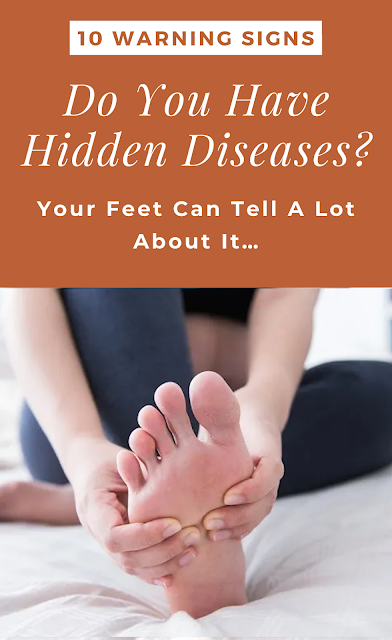Since the feet are the furthest from the heart and spine, they are the first body parts to exhibit potentially harmful changes. As a result, you must pay attention to any changes in your feet if you want to avoid serious health issues.
Listed here are 10 emergency signals from your feet:
1. Cold feet
Hypothyreosis means that you cannot keep your feet warm plus they are constantly cold. If you should be over 40, you’ll probably have a ‘lazy’ thyroid. This health condition may cause hair loss, dizziness, sudden weight gain and depression. An easy blood test will reveal whether you need a special therapy.
2. Pointed joint
Growths on the joint at the base of one’s thumb is not an immediate consequence of wearing high heels. On the contrary, it is a genetic deformation in your foot which might be worse if you wear unfitting shoes. Surgery may be the only way to remove such growths.
3. Pain in the heels
Plantar fasciitis, or the syndrome of over-use, could be the most common cause of the pain in your heels. It often occurs in the minute when you stand up. In the event that you wear smaller or unfitting shoes, your problem may possibly get even worse. There are several easy exercises dedicated to your muscle stretching that will help you improve your condition.
4. Scaling and itching and swelling
Itchy feet and scaling skin are a sign of fungal infection that could be relieved with proper creams and good hygiene. Psoriasis might be the cause of such unpleasant swelling and itching, and it requires proper medical care.
5. Yellowish nails
Color changes are a sign of aging, nevertheless when accompanied with brittle nails, they may indicate a fungal illness. It can be treated with certain creams. Yellowish nails are also common in women who polish their nails constantly.
6. Loss of tiny hairs on your toes
Even though most women do maybe not have much hair on their toes, this may indicate blood circulation problems. Sudden baldness is a sign that the feet do not get much blood that is needed seriously to maintain hair growth.
There’s also a possibility that your heart does not pump enough blood to the feet, so make sure you consult with your doctor and do more detailed
7. Spasms
Spasms in your own feet may be a sign of problems with your nerves, but oftentimes this suggests dehydration and malnutrition. Every day, especially if you exercise, drink enough liquids to hydrate your body. Eat more food rich in potassium, magnesium, and calcium to boost the intake of these nutritional elements.
8. Sores that can not heal
Sores on your feet that not heal really are a clear indicator of diabetes. If you do not regulate your high blood glucose for a long time, it will cause nerve damages which results in cuts with no physical pain. Sores that do perhaps not heal may also be an indication of skin cancer. Melanoma develops in just about any part of the human anatomy, even between your toes, which means you better check the skin thoroughly.
9. Enlarged big toe
In the event that you notice that your big toe has suddenly increased, looks all red, irritated and bloated, seek for medical help immediately. This really is commonly caused by gout, infections, arthritis, or perhaps a physical injure.
10. Numb toes or parts of the foot
Numb
feet can be a sign of diabetes, chronic alcoholism or even a
side-effect of chemotherapy. But, if it feels like only one of one’s
feet is numb, there may possibly be a problem with the nerve endings in
your foot with does occur because of unfitting shoes.

